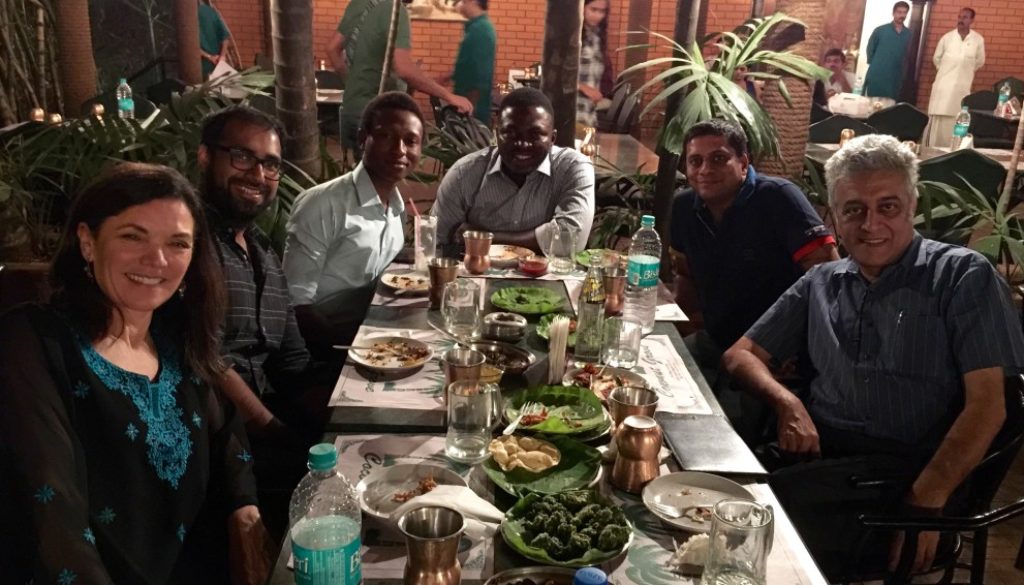2016 Game Thinking World Tour: Lessons Learned
For the past 2 weeks I’ve travelled the world, connecting with brilliant entrepreneurs in Bengaluru, Helsinki, Paris, and London. Coming from Silicon Valley, it’s been a mind-opening trip – absorbing cultural differences & spotting common themes.
Innovation is everywhere – but how it’s practiced varies widely. Here’s what I learned from this amazing trip.
‘Celebrating Failure’ is not a universally accepted practice.
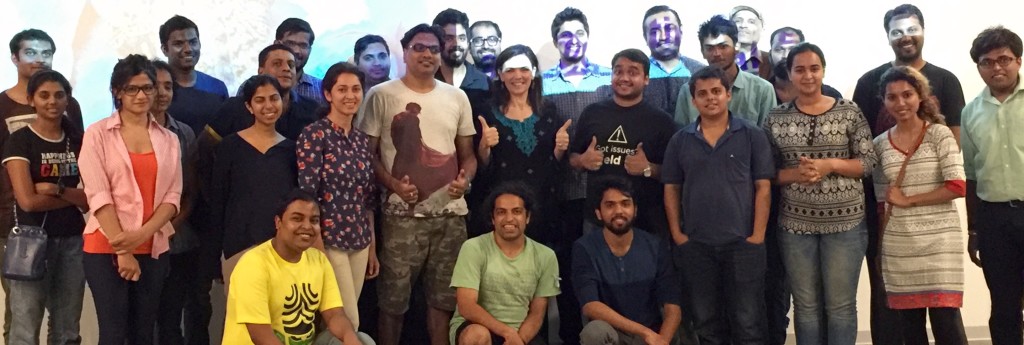
Cultural norms are powerful – and hard to shake loose. Consider an entrepreneur in Bengaluru – a place where the power goes out several times a day and poverty is starkly visible. The idea of celebrating failure in that context feels VERY different than discussions I’ve had with the VCs and entrepreneurs in the plush boardrooms of Silicon Valley.
If you dig deeper beneath the words, “celebrating failure” is really about maximizing strategic learning, and being OK with making mistakes – as long as you’re focused on getting better as you go along. This is a freeing idea — but easier said than done.
‘Doing Agile’ & ‘Running Lean’ are aspirational goals that often get derailed by old habits & rigid processes

Everywhere I went, I met passionate product creators who want to build great things. At Agile India 2016, I connected with Indian startup teams, solopreneurs, and intrapreneurs who work for larger companies. At NUMA Bengaluru and NIMA Paris, I met startups from India, Nigeria, France and the Ukfraine — and learned how they approach innovation, and what kinds of problems they’re focused on solving.
 In Helsinki, I hunkered down with a team of brilliant intrapreneurs and designers who work at a mid-sized fast-growing gaming startup. And in London, I met with a consultancy that employs a small army of agile coaches who are focused on helping companies become more nimble and effective.
In Helsinki, I hunkered down with a team of brilliant intrapreneurs and designers who work at a mid-sized fast-growing gaming startup. And in London, I met with a consultancy that employs a small army of agile coaches who are focused on helping companies become more nimble and effective.
Throughout these conversations, I sensed a growing frustration with the calcification of Agile and Lean practices. Everyone I met embraces Agile/Lean – they’ve read the manifesto, studied the books, run sprints – and they’re marching forward on their projects with the best of intentions.
 But good intentions are no match for old habits and rigid beliefs. Many teams at larger companies are frustrated with their organization’s adaptation of Agile/Lean – to them, it can look like business-as-usual, but with shiny new lingo. Or they’re faced with a new challenge, and they’re chafing because the practices that brought success at one stage of development are no longer working – yet nobody has the authority or guts to evolve and change the process itself to match this new reality. Calcification is deadly for Lean/Agile processes – yet it’s a real issue as a company grows.
But good intentions are no match for old habits and rigid beliefs. Many teams at larger companies are frustrated with their organization’s adaptation of Agile/Lean – to them, it can look like business-as-usual, but with shiny new lingo. Or they’re faced with a new challenge, and they’re chafing because the practices that brought success at one stage of development are no longer working – yet nobody has the authority or guts to evolve and change the process itself to match this new reality. Calcification is deadly for Lean/Agile processes – yet it’s a real issue as a company grows.
By contrast, I didn’t hear much complaining about Agile/Lean from the early-stage startups I met with – they’re too busy scrambling to build products and solve problems before their runway runs out. What I DID discover was a lot of confusion – and hopeful excitement – around gamifying their apps and services. Some had already tried simple points and badges, and (not surprisingly) found that it wasn’t enough to move the needle. The teams I met are hungry for truly effective design techniques that can unlock the deeper power of games — the power to drive long-lasting engagement.
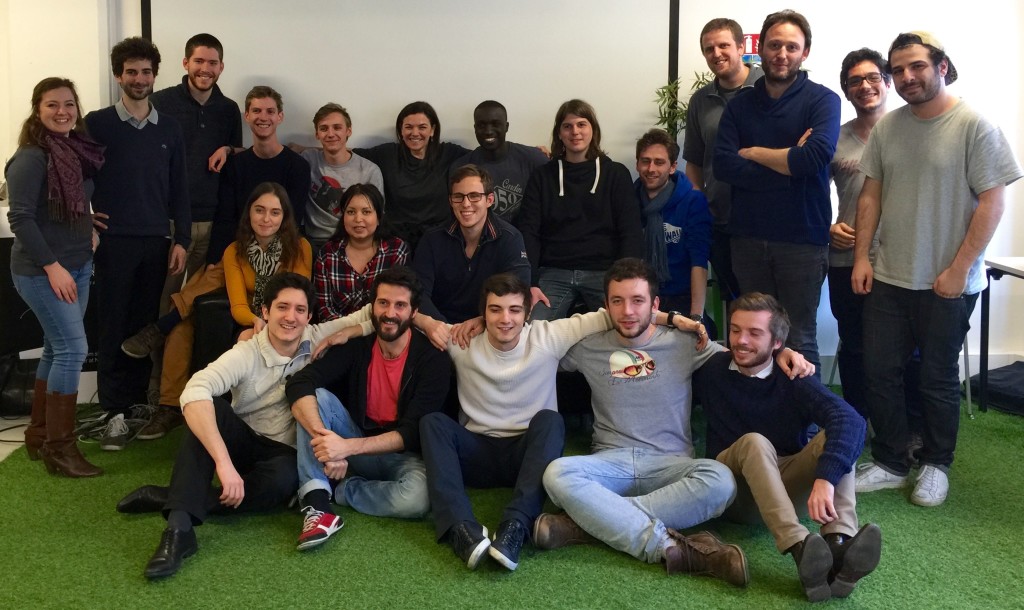
‘Game Thinking’ gets exciting when hands-on lean practices merge with smart gamification to accelerate innovation
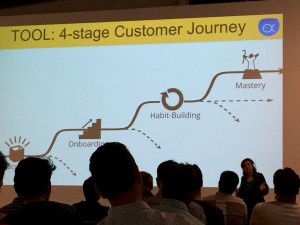
When these brilliant and hungry entrepreneurs asked me about gamification, I gave them the tools of Game Thinking. I showed them how to write an evolving customer narrative, prototype a skill-building Core Loop, and plan their MVP with a Game Thinking roadmap. They ate it up – because they truly want to design a product that people love and come back to, again and again — and these Game Thinking techniques help them get it right.
 What was NEW for me on this trip – and where things get really exciting – is the intersection of Game Thinking with Agile/Lean practices. I learned that people everywhere are hungry for an actionable, design-centric approach to Agile/Lean theory that they can put into practice – something that really moves the needle and accelerates their design process towards success.
What was NEW for me on this trip – and where things get really exciting – is the intersection of Game Thinking with Agile/Lean practices. I learned that people everywhere are hungry for an actionable, design-centric approach to Agile/Lean theory that they can put into practice – something that really moves the needle and accelerates their design process towards success.
And in the deepest sense, that’s
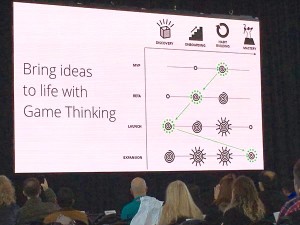 what Game Thinking is all about. Game Thinking merges Design Thinking, smart gamification & Agile/Lean practices into a framework and system for accelerating innovation and driving sustained engagement.
what Game Thinking is all about. Game Thinking merges Design Thinking, smart gamification & Agile/Lean practices into a framework and system for accelerating innovation and driving sustained engagement.
We all want to build something great- and the tools and techniques of Game Thinking can help you do exactly that.
Wanna learn more? Subscribe to our mailing list for our best articles and exclusive insider discounts.
